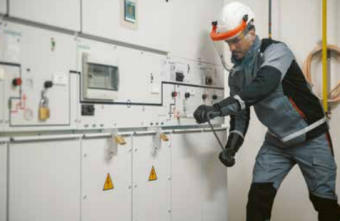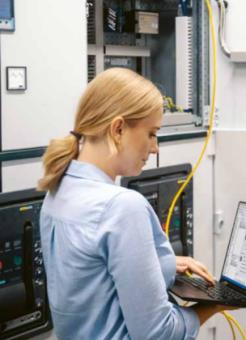
We spoke with Miroslav Ristić, from the company Smart Infrastructure, at Siemens Serbia, about the ways of supporting the industry in reducing emissions and decarbonization and the possibilities for greater sustainability within the work processes.
“Industrial companies, as well as the rest of the economy, have years behind them that were marked by the covid 19 pandemic. Some companies are in a better position than others due to the location where they operate or the sector in which they are located. Regardless of how they overcame the previous period, there is now an opportunity to shape the post-pandemic recovery in a greener way, especially because this year of uncertainty has exposed an additional problem that affects us all – climate change,” Ristić said.
Significant and mutually coordinated measures are necessary to reduce greenhouse gas emissions. It also applies to the industrial sector, especially the process and manufacturing industry, which consumes a lot of energy.
Miroslav Ristić pointed out that adequate processes are crucial in this sector because industry represents a third of the total energy consumption. And not only that. While sectors such as power generation, agriculture and households have started to reduce their own greenhouse gas emissions, industry has so far seen little progress compared to how much can be done.
IN FOCUS:
- ENVIRONMENTAL PRESERVATION IN LINE WITH PRIORITIES AND STANDARDS
- PRODUCTIVITY AND A SUSTAINABLE FUTURE THE ABB WAY
- ART THROUGH THE PRISM OF ECOLOGY

“We have identified three levers that will drive emissions reduction and decarbonization in the industry. The first is the introduction of greater flexibility in the use of energy, for example, by using storage solutions and virtual power plants. Second, we need to digitize operational processes, which will allow us to use energy efficiently. This can be achieved using IoT devices, sensors, and software. Third, we need intelligent electrification in all driving processes,” says Ristić.
Of the three levers mentioned, the third one has the greatest potential for decarbonization and can greatly profit from the first two. With electrification, two aspects should be considered: the supply of energy to the industrial site, for example, the possible use of renewable energy from wind farms, solar plants, and hydroelectric plants without CO2 emissions, as well as energy management at the site itself, for example in the form of software demand management.
Emission-free processes
Miroslav Ristić says that electrification has a large potential impact on decarbonization. It allows clean electricity from renewable sources to drive processes that previously used high-emission technologies, such as diesel generators. The process, which until this moment has led to high emissions of harmful gases, can be carried out entirely without emissions if renewable energy is used for the drive.
There are numerous opportunities for on-site energy management, as electrification opens the door to digitization and more intelligent electrification. In this way, numerous possibilities are opened for energy efficiency, operational resistance, and plant optimization.

Making electrification “smart” means introducing IoT sensors and platforms to collect massive amounts of data. Data is accumulated and analyzed using algorithms and software to help plant operators identify opportunities to increase efficiency in the plant’s energy system and overall operations.
Our interlocutor points out that this, among other things, leads to optimized production and low energy consumption. At the same time, it is possible to recognize early situations that can negatively affect the system’s efficiency, such as machine downtime.
Digitization enables the creation of a digital twin of the factory’s energy system.
In combination with industrial automation, designers can thus test numerous operational scenarios. The purpose of testing is the optimal coordination of systems and services. It contributes to lower error rates and also lower design, construction, and maintenance costs.
Examples from practice show what opportunities are available to industrial companies.
“A large number of industrial companies have used our solutions. The number of satisfied users is increasing daily, and new opportunities for cooperation are opening up. As one example, I would single out cooperation with the MIND Kragujevac industrial complex, where our advanced solutions and sophisticated equipment are installed in all distribution substations, enabling reliable electricity supply and monitoring and analysis of all system parameters,” says Ristić.
Source: Siemens
Read the story in the new issue of the Energy portal Magazine ENVIRONMENTAL PROTECTION




